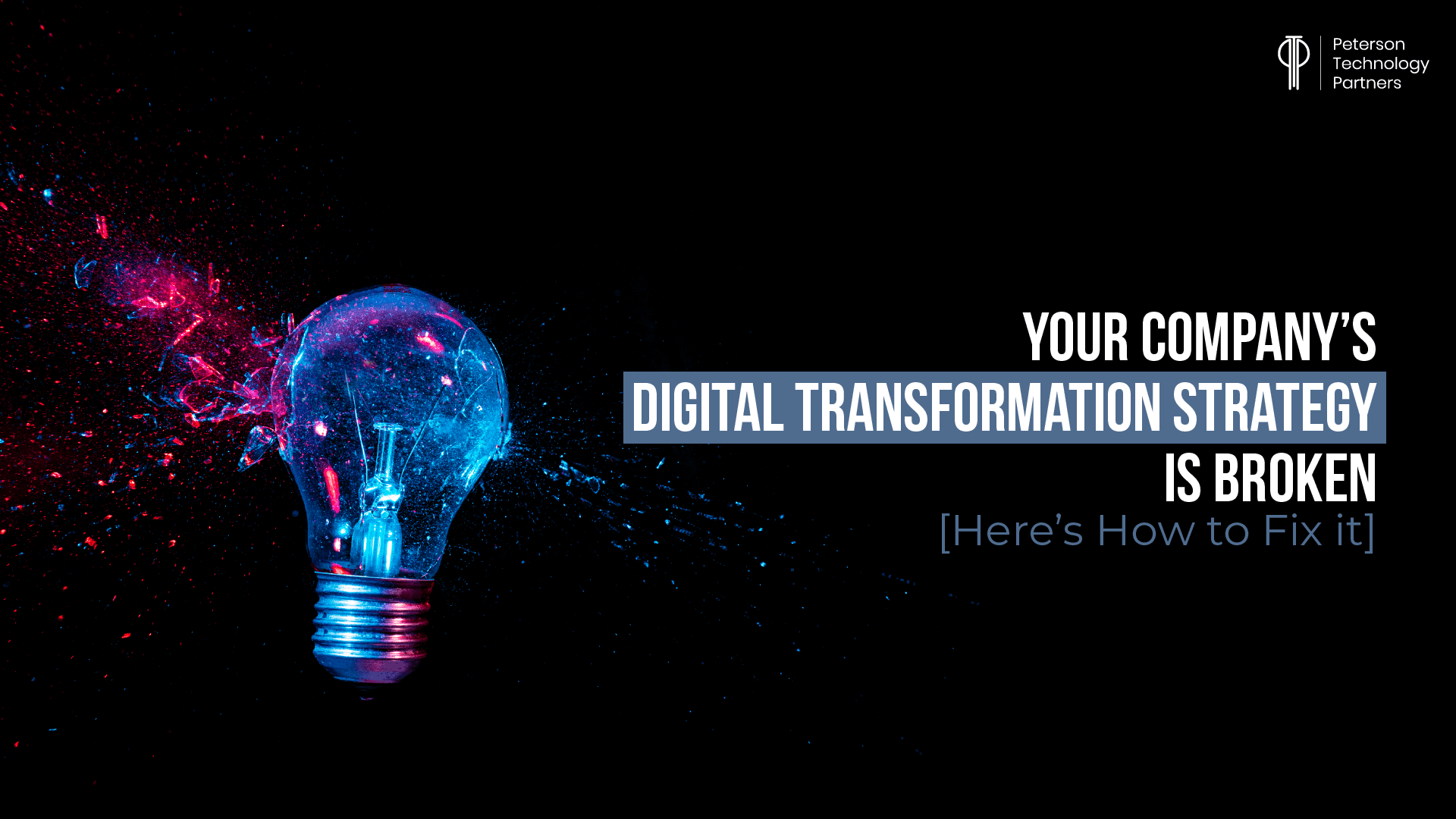Last year, YouTube users watched an estimated one billion (that’s 1,000,000,000) hours of videos – per day. (Comparitech.)
A new website is built every three seconds, per Forbes.
90% of all US citizens currently reading this sentence likely have their phone within reach at this exact moment, per Hubspot.
It’s mind-blowing statistics like these that continue to push traditional businesses towards digital transformation strategies. Those who transform effectively win in the new digital economy.
Those who don’t make the leap to digital? Tend to be failing. Not thriving. Not surviving.
…No pressure.
This is new territory for the enterprise landscape. There is no “one size fits all, best method ever” for digital transformation. No definitive “how to” guide. There isn’t even a decent FAQ page! Even the leading experts in digital transformation, with all their best practices and case studies, can and do differ as regards strategy, execution, or both.
With a general lack of history for the layperson to study, it’s no wonder so many people keep mismanaging the digital transformation. And they will continue to get it wrong until either the company goes under, the customers revolt, or leadership blindly stumbles into the perfect strategy. (Guess how often that happens.)
Companies have a tendency to take on a “technology first” approach when it comes to innovation: A project manager or CxO will learn about an emerging technology, laser-focus on the benefits (increased efficiency and decreased costs), then look for a part of the business where that technology can be applied. While their enthusiasm and evangelism is great, in practice it can lead to businesses adopting technology irrespective of actual needs, often for expensive fees, to achieve goals that might not even be strategic priorities.
Cue the abandonment of said tech for its legacy alternative. Goodbye, userbase!
So how can CxO’s ensure that their digital transformations are more than just buzzwords?
1. Start with the customer, not the technology
While it may sound obvious, this is often the most overlooked part of any digital transformation strategy. Rather than finding a new technology and then looking for somewhere to use it, look for an area of the customer experience to improve, then leverage innovation to do so.
2. Learn enough about the tech to explain it to a 5 year old
The C-suite decision maker doesn’t have to (and likely shouldn’t) know how to create the technology wholesale. They should, however, understand the how, not just the what.The best way to test real comprehension is by trying to explain a concept to a complete novice.
Related: 6 Steps to Develop a Foolproof Recruitment Policy
3. Clearly define your project management strategy
Hopefully your project management methodology is based on the company rather than industry trends. Not every team member has to be a scrum master. However, everyone should at least be aligned and knowledgeable of the selected system.
4. Co-create the change across positions and / or departments
The decision to evolve or not is usually made by a single CxO. That doesn’t mean there’s no room for input. Seek feedback from varying departments and positions to increase their buy-in when it’s time to implement change. You never know where innovative ideas or surprise subject matter experts may come from.
5. Consult with the fringe
Emerging technology is just that… emerging. Chances are the SME isn’t your traditional tech enthusiast and won’t be found in-house. They’re sharing ideas on niche forums, engaging others on Reddit and posting articles on Medium. Look outside of your normal network if you want to find those creating the trends not just following them.
6. Leverage your in-house innovators
Everett M. Rogers’ “Law of Diffusion of Innovations” states that adoption begins with the 2.5% of Innovators. These are the people that embrace disruptive technology (yes, even before the Early-Adopters). Focus your time and energy on rewarding and nurturing this mentality, and nevermind the 16% of Laggards – they may not ever embrace change.
7. Collaborate throughout the entire development lifecycle (DLC)
The bigger a project is, and the longer it lasts, the more likely teams are to splinter off. Prevent this by scheduling conference calls, meetings or touch-bases will all teams through the end of the project. Problems recognized during deployment may be easy to fix… but only if the team responsible is communicating with everyone else.
Digital transformation strategy is a new venture.
Most CxO’s recognize it’s necessary but, without much history, it can be difficult to properly implement. A strategy that puts the customer experience before the technology and collaboration before pride is the only type of strategy worth the screen it’s typed on.
For an optimal digital transformation, you need a tight-knit team.
Let us connect you with the strongest candidates to help meet your goals; say hello@ptechpartners.com or contact us here.
About the Company:
Peterson Technology Partners (PTP) has partnered with some of the biggest Fortune brands to offer excellence of service and best-in-class team building for the last 25 years.
PTP’s diverse and global team of recruiting, consulting, and project development experts specialize in a variety of IT competencies which include:
- Cybersecurity
- DevOps
- Cloud Computing
- Data Science
- AI/ML
- Salesforce Optimization
- VR/AR
Peterson Technology Partners is an equal opportunities employer. As an industry leader in IT consulting and recruitment, specializing in diversity hiring, we aim to help our clients build equitable workplaces.





 Work with us
Work with us